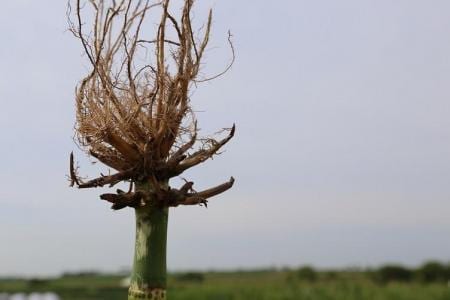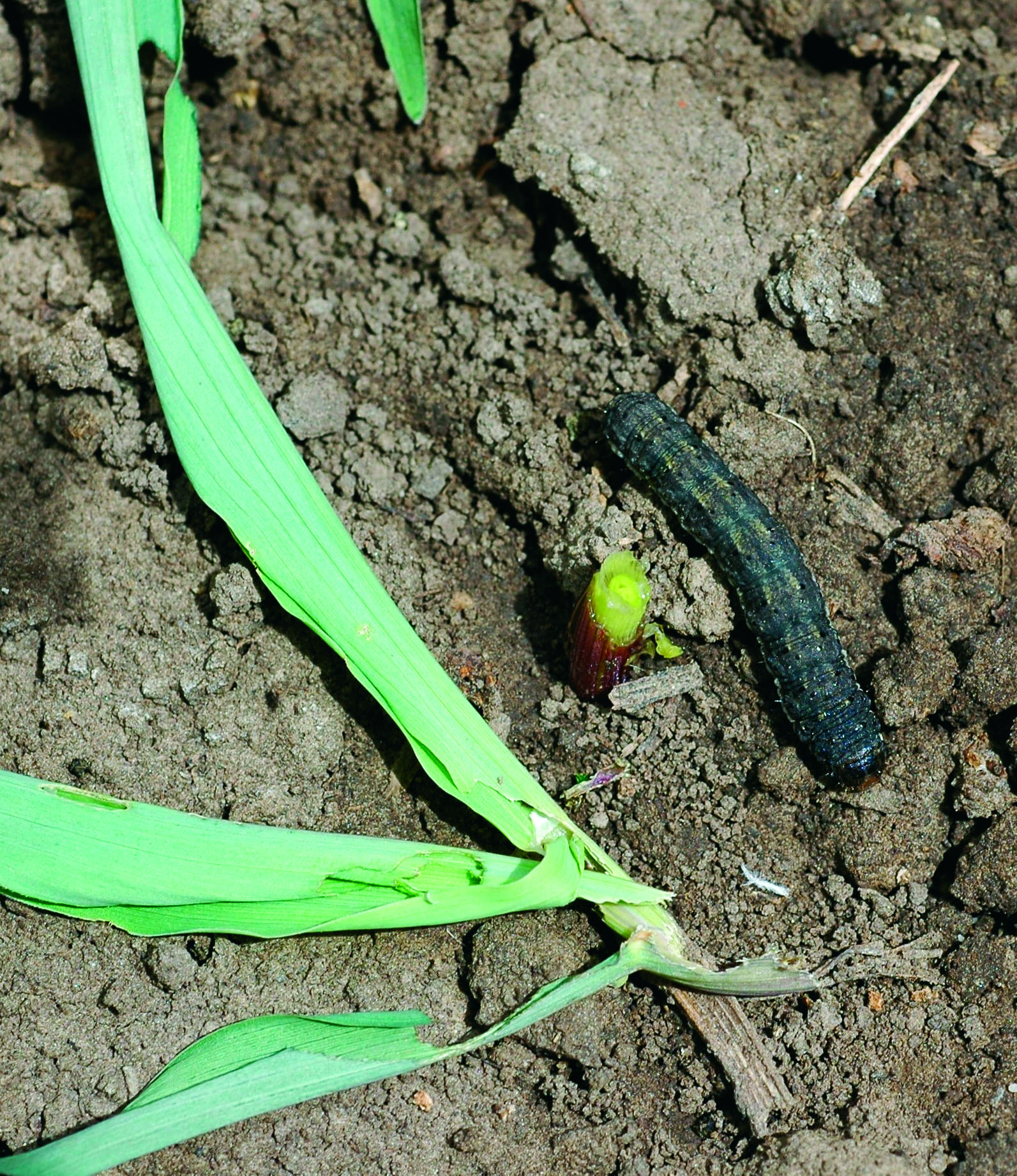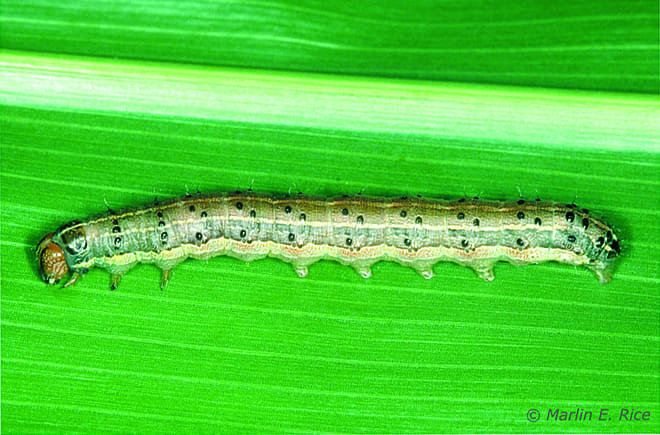 It’s never too early to begin scouting for pests in your fields.
It’s never too early to begin scouting for pests in your fields.
It’s never too early to begin scouting for pests in your fields. Several insects can pose threats to seedlings and crops in the early development stages that can result in stand loss and loss of leaf tissue, which both contribute to yield loss. In this article, we will look at some of the most common insects to watch for in the coming weeks.1
Corn Rootworm
Northern and western corn rootworms (Diabrotica) are beginning to show up in fields across the Corn Belt. Reportedly worth one billion dollars in yield loss annually in the United States, it is important to begin scouting for these pests now.
Rootworm larvae begin to hatch from overwintering eggs in late spring and cause damage to corn root systems by feeding on corn roots. Larger larvae can also tunnel into the plant crown. Destruction of root tissue impacts water and nutrient uptake. Severe root pruning can kill small plants while larger plants may be able to produce new root growth faster than larvae can damage roots; however, root pruning may be severe enough, in some cases, to cause plant lodging and yield loss.
To identify rootworm presence in your fields, begin by digging around corn roots to look for larvae in the soil and on the roots. Also look for window paning and scarring on the roots. Throughout the season, continue assessing roots and stalks to determine the extent of your rootworm issue. A prophylactic insecticide application may be necessary in severe cases.
If rootworm is a problem in your fields, talk to your AgVenture Yield Specialist about selecting the best hybrids, with traited rootworm protection, for your operation.2
Corn roots pruned by corn rootworm larvae. Photo by Erin Hodgson, Iowa State University.

Black Cutworm
Black cutworm (BCW) can devastate corn stands and are most damaging while they are still small. While BCW adults do not overwinter in the northern states, their migration from the south occurs in April and May. Female moths lay eggs in fencerows, pastures, plant debris and fields with weedy vegetation. Larvae are most damaging during the third and fourth stages of their seven-stage development, which is when they are ½ to ¾ inch long. Larvae develop and feed over a period of 20-to-30 days and can reach up to 1-1/2 inches in length at full growth.
Scout fields weekly from emergence to V6, looking for wilted or cut plants, and recognizing the larvae, which can vary in color from light gray to black, and have four dark tubercles on top of each abdominal segment.
If you believe your field is infested, talk to your AgVenture Yield Specialist about a solution and to determine if a rescue treatment is necessary. If more than three percent of plants have been damaged, corn plants are in V2 to V6 stage of development and larvae are still less than one-inch in length, this may be a solution to get rid of infestation. Your AYS can also help determine hybrids that have protection against BCW.3
Black cutworm larvae cause the most damage in their third and fourth stages of growth, when they are about ½-¾” long.

Fall Armyworm
Don’t let the name deceive you – fall armyworm is a summer pest that you should begin scouting for in mid-June, especially if you have any late-planted corn. Fall armyworm causes leaf damage and injury to plant ears, and the pest prefers late-planted and late-maturing corn that has not yet silked. Early detection and properly timed insecticide application will be critical for controlling this pest
Fall armyworm larvae vary in color from tan to black with three yellow stripes down the back, resembling other corn borers, but featuring a white inverted Y on its head. The most effective way to control fall armyworm is when the larvae are small, so begin scouting mid-June and continue to monitor your crop until silks begin to dry. The best action steps are to apply insecticide treatments before larvae burrow deep into the whorl or enter the ears and select hybrids with traited protection against fall armyworm. Talk to your AgVenture Yield Specialist if you have concerns about this pest and they will help select the best hybrids for your operation.4
The fall armyworm causes leaf damage and injury to corn ears.